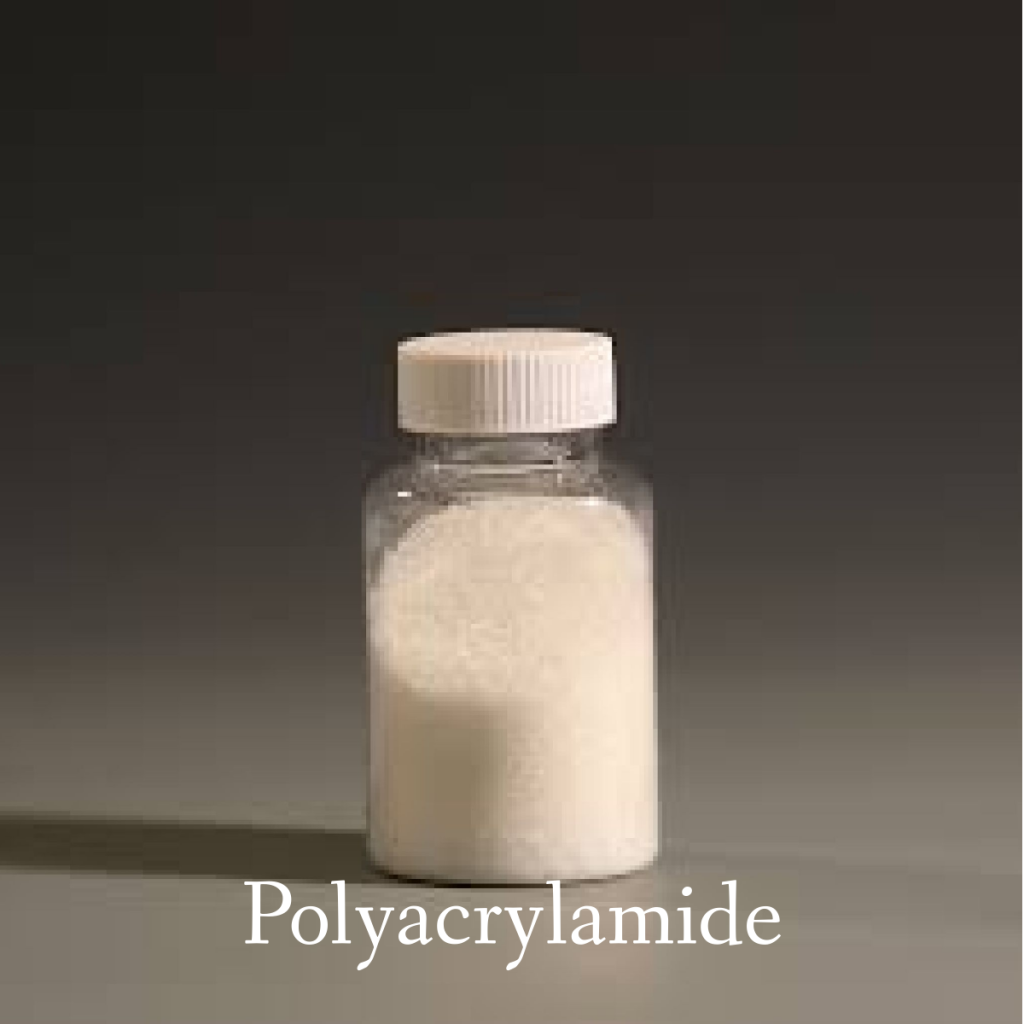Discover the wonders of polyacrylamide and its numerous benefits.
What Is Polyacrylamide and What Are Its Benefits?
Polyacrylamide may sound like a mouthful, but trust me, it’s more fascinating than you think! This versatile substance has a wide range of applications and benefits that make it truly special. In this article, we’ll dive deep into the world of polyacrylamide and explore its intriguing chemical structure, production process, and diverse applications. We’ll also uncover the numerous benefits of using polyacrylamide, from environmental advantages to economic perks. But like any topic, there are potential risks and controversies surrounding polyacrylamide, which we’ll explore along the way. So, let’s get started on this exciting journey!

Understanding Polyacrylamide: A Brief Overview
Before we jump into the nitty-gritty, let’s take a moment to appreciate what polyacrylamide is all about. Simply put, it’s a super versatile polymer that can perform wonders in various industries. From agriculture to water treatment, polyacrylamide knows how to lend a helping hand when it comes to solving complex problems. But what makes it so special? Well, it all comes down to its intriguing chemical structure and the way it is produced.
The Chemical Structure of Polyacrylamide
Let’s dive into the molecular world of polyacrylamide for a moment. Picture a chain-like structure made up of repeating units. These units consist of acrylamide monomers, which join together through a process called polymerization. This unique structure gives polyacrylamide its exceptional properties and versatility.
Each acrylamide monomer contains a double bond that allows it to link with other monomers, forming a long chain. This chain-like structure can be linear or branched, depending on the specific synthesis conditions. The flexibility of polyacrylamide’s structure allows it to adopt different conformations, making it adaptable to various applications.
Furthermore, polyacrylamide chains can be modified by introducing different functional groups, enhancing its performance in specific applications. For example, the addition of charged groups can make it an effective flocculant for water treatment, while the incorporation of hydrophobic groups can improve its performance in oil recovery processes.
The Production Process of Polyacrylamide
Producing polyacrylamide is a bit like cooking up a scientific storm. It starts with the reaction of acrylamide monomers with a crosslinker, followed by some fancy chemistry voodoo to bring it all together. The result? A fascinating polymeric substance that holds great potential for various applications.
The first step in the production process involves the synthesis of acrylamide monomers. Acrylamide is typically derived from the reaction of acrylic acid with ammonia. This reaction produces acrylamide as a white crystalline solid, which is then purified for further use.
Once the acrylamide monomers are obtained, they are mixed with a crosslinker. The crosslinker is a small molecule that helps create the three-dimensional network structure of polyacrylamide. Common crosslinkers include N,N’-methylenebisacrylamide and N,N’-diallyltartardiamide.
Next comes the polymerization step, where the acrylamide monomers and crosslinker are mixed in a solvent, such as water or an organic solvent. Polymerization can be initiated by various methods, including the use of chemical initiators or exposure to heat or light. The reaction conditions, such as temperature and reaction time, can be carefully controlled to achieve the desired polymer properties.
During polymerization, the acrylamide monomers and crosslinker molecules react, forming covalent bonds and creating a network of interconnected polymer chains. The resulting polyacrylamide can be further processed to obtain different forms, such as powders, gels, or emulsions, depending on the intended application.
It’s worth noting that the production of polyacrylamide can also involve the incorporation of other additives, such as surfactants or initiators, to tailor its properties for specific applications. This versatility in production methods allows for the customization of polyacrylamide to meet the diverse needs of different industries.
The Diverse Applications of Polyacrylamide
Now that we’ve uncovered the mysteries of polyacrylamide’s structure and production, let’s explore its diverse applications. This super substance can be found flexing its talents in agriculture, water treatment, and even oil recovery. Talk about being a jack of all trades!
Polyacrylamide in Agriculture
When it comes to boosting crop growth, polyacrylamide takes the cake. It has the amazing ability to retain water in the soil, promoting better root growth and increasing plant yield. So, whether you’re cultivating tomatoes or growing a lush field of sunflowers, polyacrylamide is the secret ingredient to your success.
Imagine a farmer’s field, vibrant and teeming with life. The sun shines down, and the soil is rich and fertile. But beneath the surface, something extraordinary is happening. Polyacrylamide, the unsung hero of agriculture, is working its magic. As the farmer sows the seeds, little does he know that the addition of polyacrylamide to the soil will revolutionize his crop yield. With its water-retaining properties, polyacrylamide ensures that every drop of moisture is utilized, providing the plants with a constant supply of hydration. The roots grow deeper, anchoring the plants firmly and allowing them to absorb nutrients more efficiently. The result? Bountiful harvests and a farmer’s delight.
Polyacrylamide in Water Treatment
If you thought polyacrylamide’s talents were limited to the land, think again! In the world of water treatment, this substance works like a superhero, tackling pollution and purifying water. Its unique chemical properties make it a champion at removing unwanted particles and pollutants, leaving us with clean and clear water to enjoy.
Close your eyes and picture a pristine lake, its surface sparkling under the golden rays of the sun. But what lies beneath? A hidden world of impurities and contaminants, threatening the delicate balance of aquatic life. Enter polyacrylamide, the defender of water purity. As it is introduced into the water treatment process, polyacrylamide forms a network of molecules, trapping suspended solids and impurities. Like a skilled magician, it pulls these unwanted guests out of the water, leaving behind a crystal-clear liquid that is safe for consumption. From municipal water treatment plants to industrial facilities, polyacrylamide is the unsung hero that ensures our water remains pure and pristine.
Polyacrylamide in Oil Recovery
When it comes to extracting every last precious drop of oil from the ground, polyacrylamide knows how to lend a helping hand. By adding this substance to the mix, oil companies can improve the efficiency of their extraction process. It’s like giving oil a gentle and persuasive nudge to come out and play!
Deep beneath the Earth’s surface, vast reservoirs of oil lie waiting. But reaching them is no easy task. That’s where polyacrylamide steps in, a trusted ally in the realm of oil recovery. As it is injected into the oil wells, polyacrylamide forms a thick gel-like substance that helps to increase the viscosity of the oil. This enhanced flowability allows the oil to be extracted more efficiently, maximizing the yield and minimizing waste. With polyacrylamide by their side, oil companies can tap into these hidden reserves with ease, ensuring a steady supply of this precious resource.
The Benefits of Polyacrylamide
Now that we’ve explored the amazing applications of polyacrylamide, let’s dive into its many benefits. From environmental advantages to economic perks, this versatile substance has a lot to offer.
Environmental Advantages of Polyacrylamide
One of the great things about polyacrylamide is its eco-friendly nature. By promoting efficient water usage and reducing soil erosion, it’s a real game-changer for the environment. Polyacrylamide acts as a water retention agent, allowing for better water infiltration in soil, which in turn reduces water runoff and conserves this precious resource. This not only benefits the environment but also helps in water management, especially in arid regions where water scarcity is a pressing issue.
In addition to its water-saving properties, polyacrylamide also plays a crucial role in preventing soil erosion. When applied to agricultural fields or construction sites, it forms a protective layer on the soil surface, reducing the impact of rainfall and preventing the loss of fertile topsoil. This helps to maintain soil structure, retain nutrients, and protect the surrounding ecosystem from sedimentation and pollution.
Furthermore, polyacrylamide has been found to be effective in controlling and mitigating the negative impacts of pollutants, such as heavy metals and organic contaminants, in water bodies. Its ability to bind to these pollutants and facilitate their removal makes it a valuable tool in wastewater treatment and environmental remediation efforts.
Economic Benefits of Using Polyacrylamide
They say that money makes the world go round, and polyacrylamide certainly knows how to save a few bucks. By increasing crop yield and improving oil extraction efficiency, this wonder substance brings significant economic advantages to the table.
When applied in agriculture, polyacrylamide acts as a soil conditioner, enhancing soil structure and water-holding capacity. This leads to improved crop growth, increased yield, and better overall plant health. Farmers who utilize polyacrylamide can expect higher profits and a more sustainable farming operation.
Not only does polyacrylamide benefit the agricultural sector, but it also plays a significant role in the oil and gas industry. In oil extraction, polyacrylamide is used as a flocculant, aiding in the separation of oil and water. This results in more efficient oil recovery and reduces the amount of wastewater generated during the process. By optimizing oil extraction operations, polyacrylamide helps oil companies increase their production rates and reduce costs, contributing to a more profitable and sustainable industry.
Moreover, the economic benefits of polyacrylamide extend beyond agriculture and oil extraction. This versatile substance finds applications in various industries, such as mining, paper manufacturing, and wastewater treatment. Its ability to enhance process efficiency, reduce waste generation, and improve product quality makes it a valuable asset for businesses looking to optimize their operations and reduce costs.
Potential Risks and Controversies Surrounding Polyacrylamide
As with any superhero, there are always some potential risks and controversies lurking in the shadows. Let’s shed some light on them, shall we?
Health Concerns Related to Polyacrylamide
While polyacrylamide is generally safe to use, like any chemical, it’s essential to handle it with care. Proper precautions should be taken, especially in industrial settings, to minimize any potential health risks. Safety first, folks!
Environmental Impact of Polyacrylamide Use
Although polyacrylamide is a friend to the environment in many ways, its use does come with some potential concerns. Proper disposal methods and responsible usage are key to ensuring that the positive impacts outweigh any negative consequences. Let’s be mindful stewards of our planet!
The Future of Polyacrylamide
As we look ahead, it’s clear that polyacrylamide has an exciting future filled with innovations and emerging applications.

Innovations in Polyacrylamide Production
The scientific minds behind polyacrylamide are constantly seeking ways to improve its production process. Through research and innovation, new methods are being explored to make this wonder substance even more efficient and sustainable. The future is bright!
Emerging Applications of Polyacrylamide
As technology advances and new challenges arise, polyacrylamide continues to find its place in previously unexplored territories. From biotechnology to clean energy, the possibilities are endless. Who knows where polyacrylamide will flex its talents next?
And there you have it, a whirlwind tour of the captivating world of polyacrylamide and its incredible benefits. Whether it’s saving crops and purifying water or unlocking new innovations, this superhero substance will continue to make its mark in the world. So, let’s raise a toast to polyacrylamide and all the wonders it brings!





